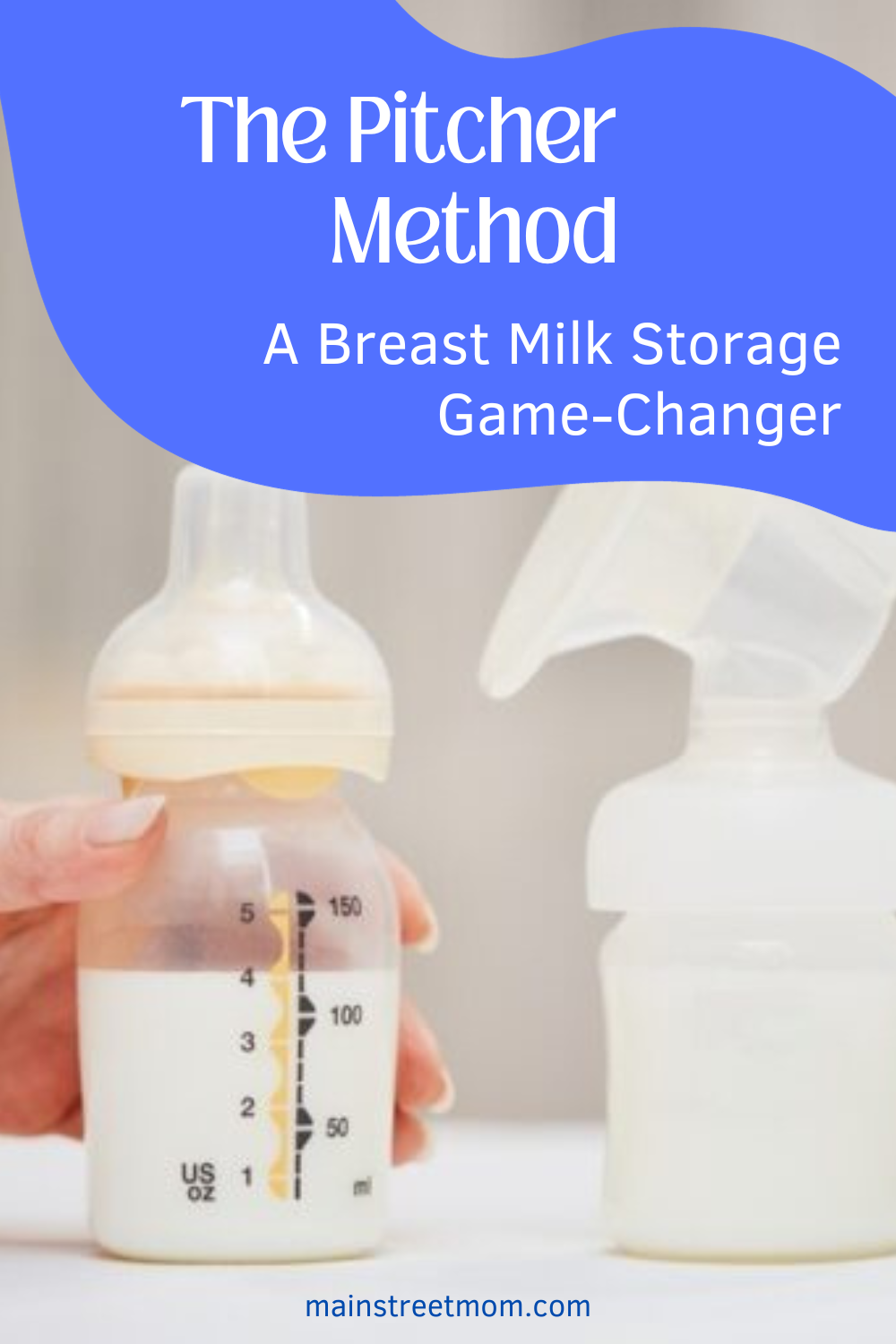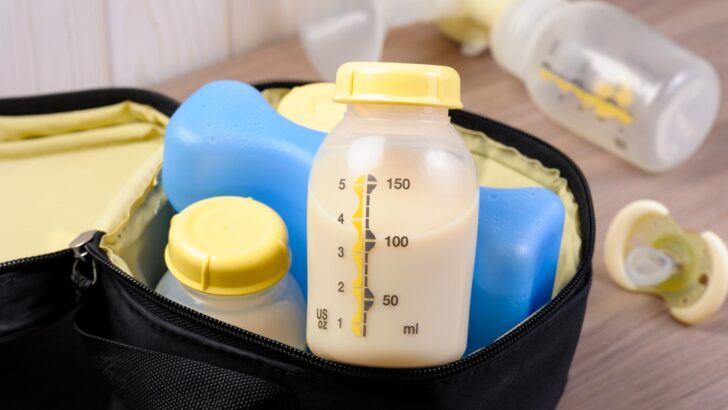Not all moms produce the same amount of milk, and that’s completely okay! In fact, even your own milk supply can vary. One day, you’re able to pump a full bottle while the other, you can barely fill half of it. That’s when the pitcher method for storing breast milk might come in handy.
If you experience this kind of inconsistency, you probably want to stock up on some milk. However, your stock can also become quite messy, with full bottles and those half-empty ones. It’s such a shame when your precious milk goes to waste. There must be a better way to store it, right?
And, luckily, there is! A lot of moms who struggle with their breast milk supply swear by the pitcher method. It helps them manage their leftover milk, so that they no longer have to throw it away because it’s been in the fridge for too long.
If this sounds like something that could be helpful, then I couldn’t be happier you’re here! I’ll introduce you to the pitcher method of storing and using your breast milk, and I promise you it will be a game-changer. Let’s dive right in!
What is the pitcher method?
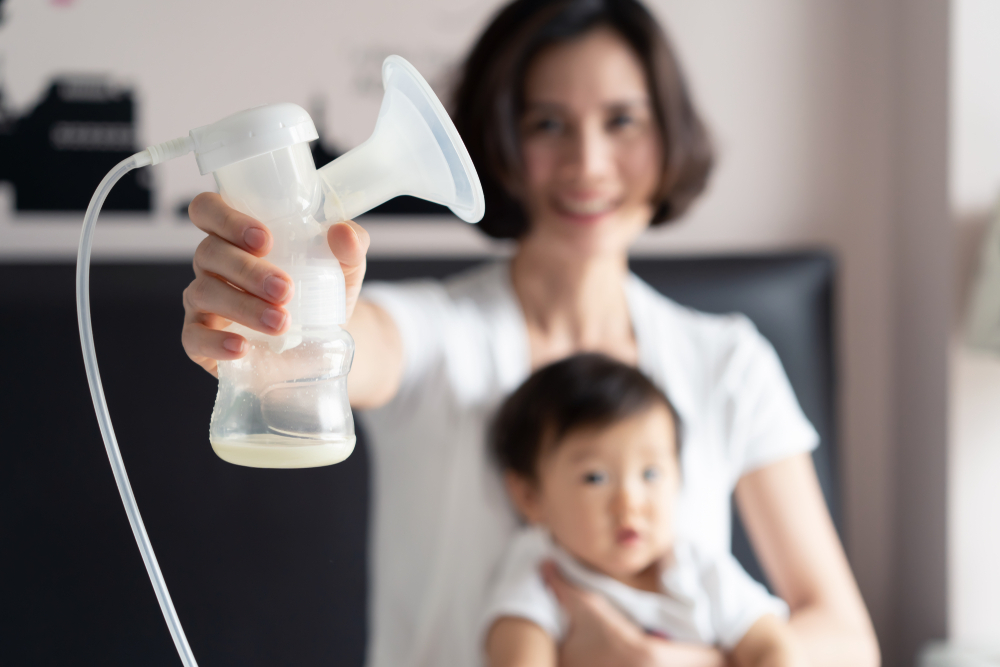
So, what exactly is a pitcher method? It’s a way to store your breastmilk that you’ve pumped over a 24-hour period, all in a single, refrigerated container.
In other words, you collect your one day’s worth of milk supplies in one jar and put it in the fridge to use afterward. It’s a method loved by many moms, as it’s a lot safer alternative to your typical breastmilk storage methods.
When your container is full, you can go ahead and prepare your baby’s feeding bottles for the following day. If there’s any leftover milk, you can simply freeze it and use it first the next time. How simple is that? It’s clean, effective, and saves time, space, and milk! Sounds good to me.
Pros and cons of the pitcher method
Although it sounds like a perfect method, it does come with some good and bad sides you should be aware of. You should always be careful with the milk you give to your bub, and always make sure that it’s fresh and not too old.
Her tummy is sensitive and will react to any abnormalities in her milk. Because of that, it’s important that you inform yourself well before making any changes, even if it’s just storage. Make sure you’re familiar with all the positives and negatives, so you can make the right choice for your baby.
Her health comes first and it should always be your top priority, even if it means your fridge is filled with baby bottles. If you’re interested in using the pitcher method for your breast milk, let’s go over the pros and cons you should know about.
Pros
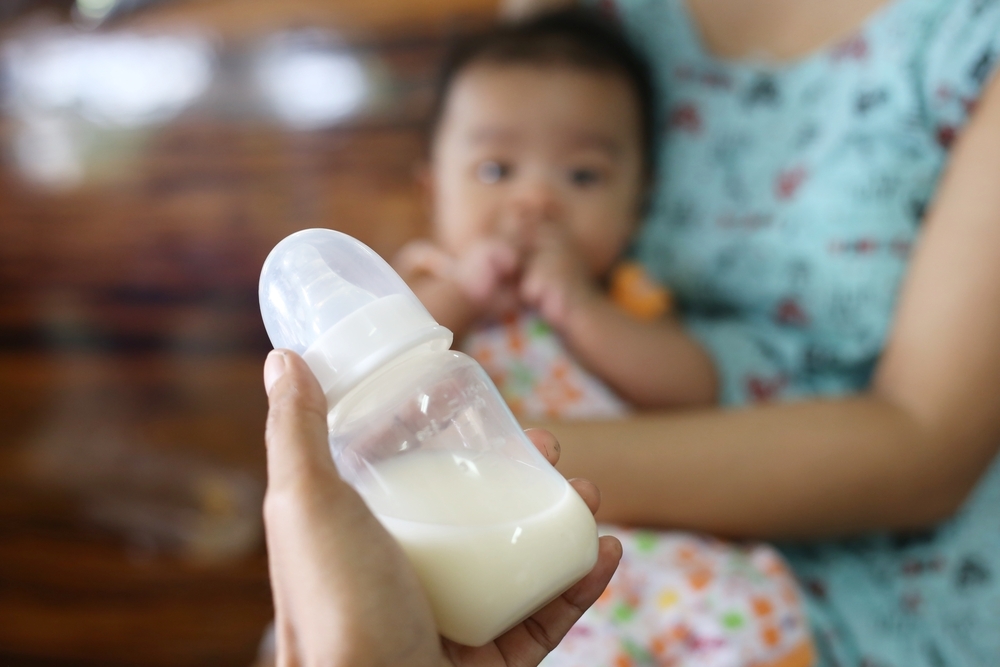
One of the biggest advantages of using the pitcher method is that it saves space. In fact, it’s one of the main reasons moms opt for this way of storing their milk. Instead of accumulating bottles in your refrigerator, you simply use one larger jar throughout the day, thereby saving space.
Pour your breast milk into a single jar, and simply fill your bottle from there when it’s time to feed your baby. You’re saying goodbye to baby bottles in your refrigerator!
This can also be very helpful if you never seem to have enough bottles. And let me tell you, if you’re trying to stay away from plastic ones, baby bottles can be pretty expensive!
Then, if you’re like me and you don’t like washing dishes, I’m sure you’re always looking for ways to avoid using too many containers. This is one way to do that!
Simply wash your bottle after feeding, and get a new one while it’s drying. That way, you’ll only have a few bottles in rotation, and they won’t be all over your kitchen anymore.
On top of that, the pitcher method proves to have positive results when it comes to babies with lactose overload. The milk you pump throughout the day can vary in lactose. When you mix it together in a jar, though, it all distributes evenly, and your baby receives a more balanced bottle.
Another pro that some moms don’t even think about often is that they’re able to scrape off all of that rich fat that accumulates on the sides of the container. When you’re using bottles for storage, scraping it off can be quite impossible. With large jars, however, it can be swirled right back in.
Cons
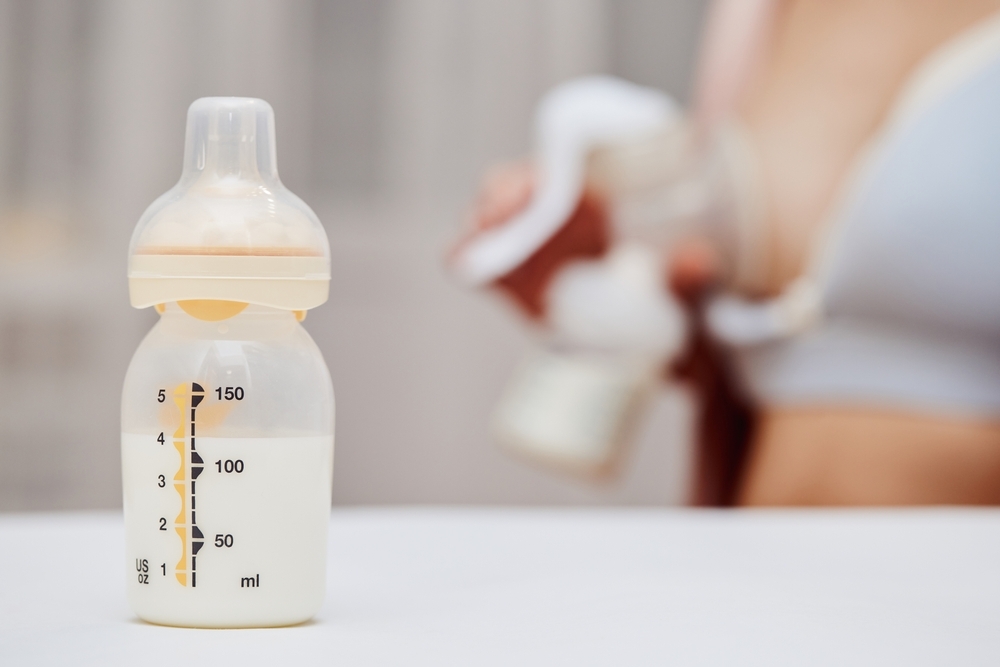
Because you need to let your milk cool down first before you pour it into the jar with the rest of the day’s “stash,” some moms claim that the extra steps are not worth it. In fact, it’s typically the reason they decide against it. They often completely forget about the milk they leave to cool down, which creates more issues.
On the other hand, some moms believe that mixing warm and cold milk could have some negative effects. Since there’s not much proof regarding this statement, I’d recommend you talk to your pediatrician and get proper advice on the matter.
Another con when it comes to this method is the time of your pumping. Research shows that the composition of your breast milk changes throughout the day. The milk you produce at night usually has higher levels of melatonin, while the milk you produce in the morning has more cortisol.
Let’s first take a moment to appreciate how incredible your body is. Because of these things, babies who breastfeed have a better sleep schedule than babies who are bottle-fed.
That’s why many moms label the bottles they pump in the morning and at night. Needless to say, using a pitcher method makes that impossible since they all get mixed up together.
Tips and tricks for storing breast milk using the pitcher method
You’ve weighed all of the pros and cons and come to the conclusion that using the pitcher method for your breast milk is something you want to try. Great! Now, there are a couple of simple tips and tricks I’d like to share to make this method a lot easier and more efficient for you.
1. Make sure you cool down the milk first

According to The Academy of Breastfeeding Medicine, freshly pumped milk shouldn’t be added to frozen or cooled milk right away. That way, you prevent the stored milk from rewarming. Instead of pouring it in right away, cool it down first before mixing it with older breast milk.
There are certain breast milk storage guidelines you need to follow in order to limit bacterial growth. Keeping your milk in the freezer already slows it down significantly, so adding warm milk can cause bacteria to develop faster.
The only time it’s okay for you to mix milk supplies of different temperatures is if you plan on using them right away. That way, bacteria don’t get enough time to grow.
2. Sterilize the container after each use
No matter what you use – be it a bottle, jar, or pitcher – you should always sterilize it before the next use. Just like your pump, you should regularly wash the containers you use for milk storage. The easiest way to do this is by using a sterilizer.
However, most of the time, the container you use for your pitch method is too large to fit in one. If that’s the case with you, put your jar into a dishwasher, or use any kind of sanitizing dish detergent.
I can’t stress enough how important it is to keep your breast milk containers clean. If you don’t, the leftover milk can develop bacteria, and ruin the next supply you pour in. You then risk giving your baby bad milk, which could have serious side effects.
3. Label your older milk supplies
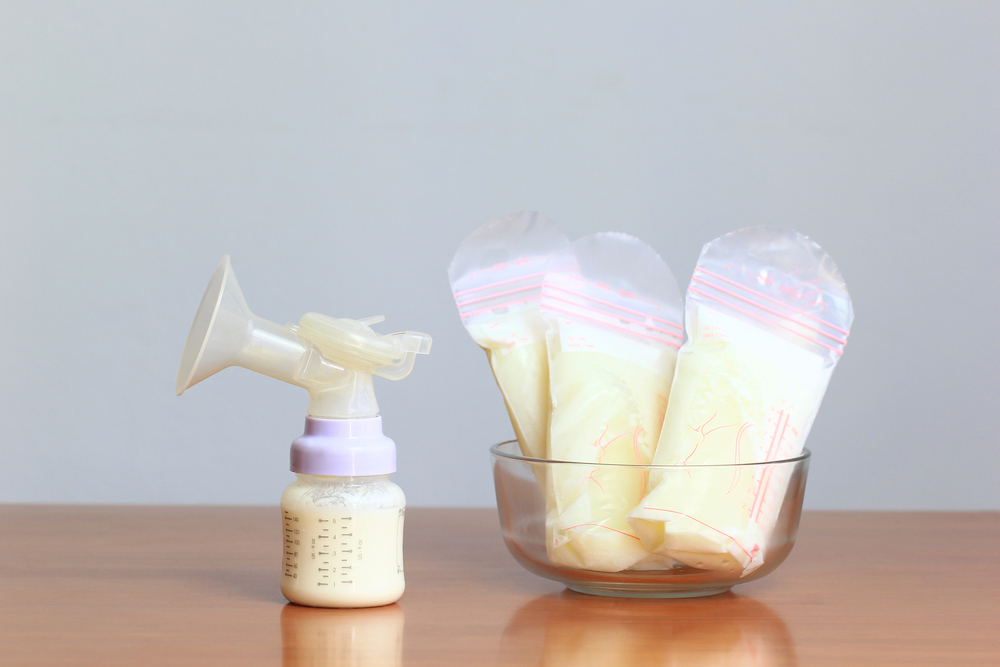
In case your container has milk inside that’s older than 24 hours, make sure you label it with the date of the oldest supply. That way, you’ll know when it’s time to use all of your milk, since it can’t be stored for longer than 4 days.
Conclusion
All in all, whether or not you opt for the pitcher method for breast milk storage is totally up to you. Every mom has her preferences and, depending on the amount of milk you have and how much space it takes up, you’ll know best if this method will work for you.
One thing’s for sure, though. Storing your breast milk like this will help you keep your fridge organized, and you’ll no longer have to deal with accumulated bottles all over your kitchen and refrigerator.
Plus, you’ll always give your baby milk that’s rich in fats she needs, because it will be a lot easier for you to mix it before pouring it into her bottle. If you can deal with the extra step of cooling your milk first, this method could work for you.
